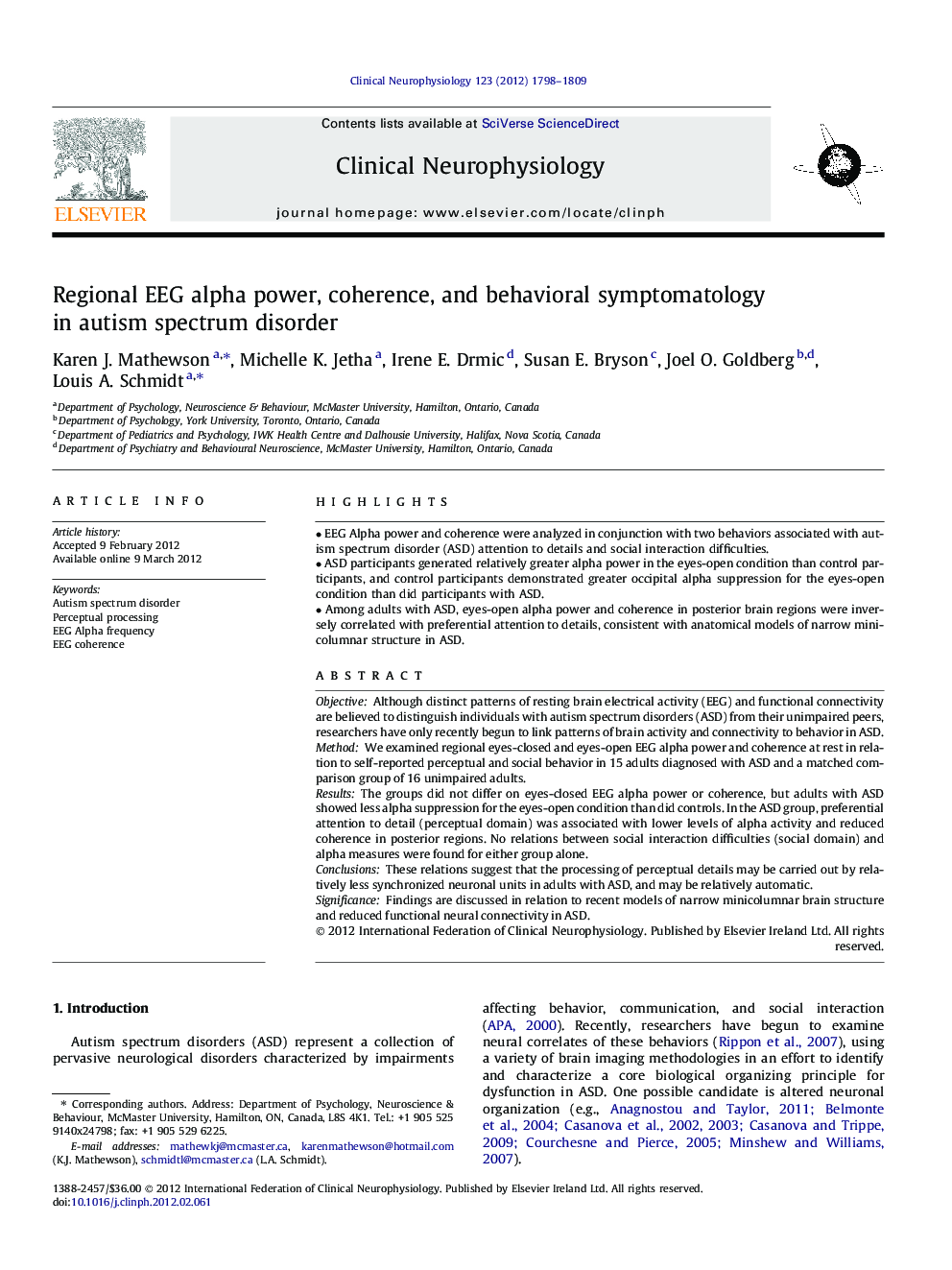| Article ID | Journal | Published Year | Pages | File Type |
|---|---|---|---|---|
| 6008776 | Clinical Neurophysiology | 2012 | 12 Pages |
ObjectiveAlthough distinct patterns of resting brain electrical activity (EEG) and functional connectivity are believed to distinguish individuals with autism spectrum disorders (ASD) from their unimpaired peers, researchers have only recently begun to link patterns of brain activity and connectivity to behavior in ASD.MethodWe examined regional eyes-closed and eyes-open EEG alpha power and coherence at rest in relation to self-reported perceptual and social behavior in 15 adults diagnosed with ASD and a matched comparison group of 16 unimpaired adults.ResultsThe groups did not differ on eyes-closed EEG alpha power or coherence, but adults with ASD showed less alpha suppression for the eyes-open condition than did controls. In the ASD group, preferential attention to detail (perceptual domain) was associated with lower levels of alpha activity and reduced coherence in posterior regions. No relations between social interaction difficulties (social domain) and alpha measures were found for either group alone.ConclusionsThese relations suggest that the processing of perceptual details may be carried out by relatively less synchronized neuronal units in adults with ASD, and may be relatively automatic.SignificanceFindings are discussed in relation to recent models of narrow minicolumnar brain structure and reduced functional neural connectivity in ASD.
⺠EEG Alpha power and coherence were analyzed in conjunction with two behaviors associated with autism spectrum disorder (ASD) attention to details and social interaction difficulties. ⺠ASD participants generated relatively greater alpha power in the eyes-open condition than control participants, and control participants demonstrated greater occipital alpha suppression for the eyes-open condition than did participants with ASD. ⺠Among adults with ASD, eyes-open alpha power and coherence in posterior brain regions were inversely correlated with preferential attention to details, consistent with anatomical models of narrow minicolumnar structure in ASD.
